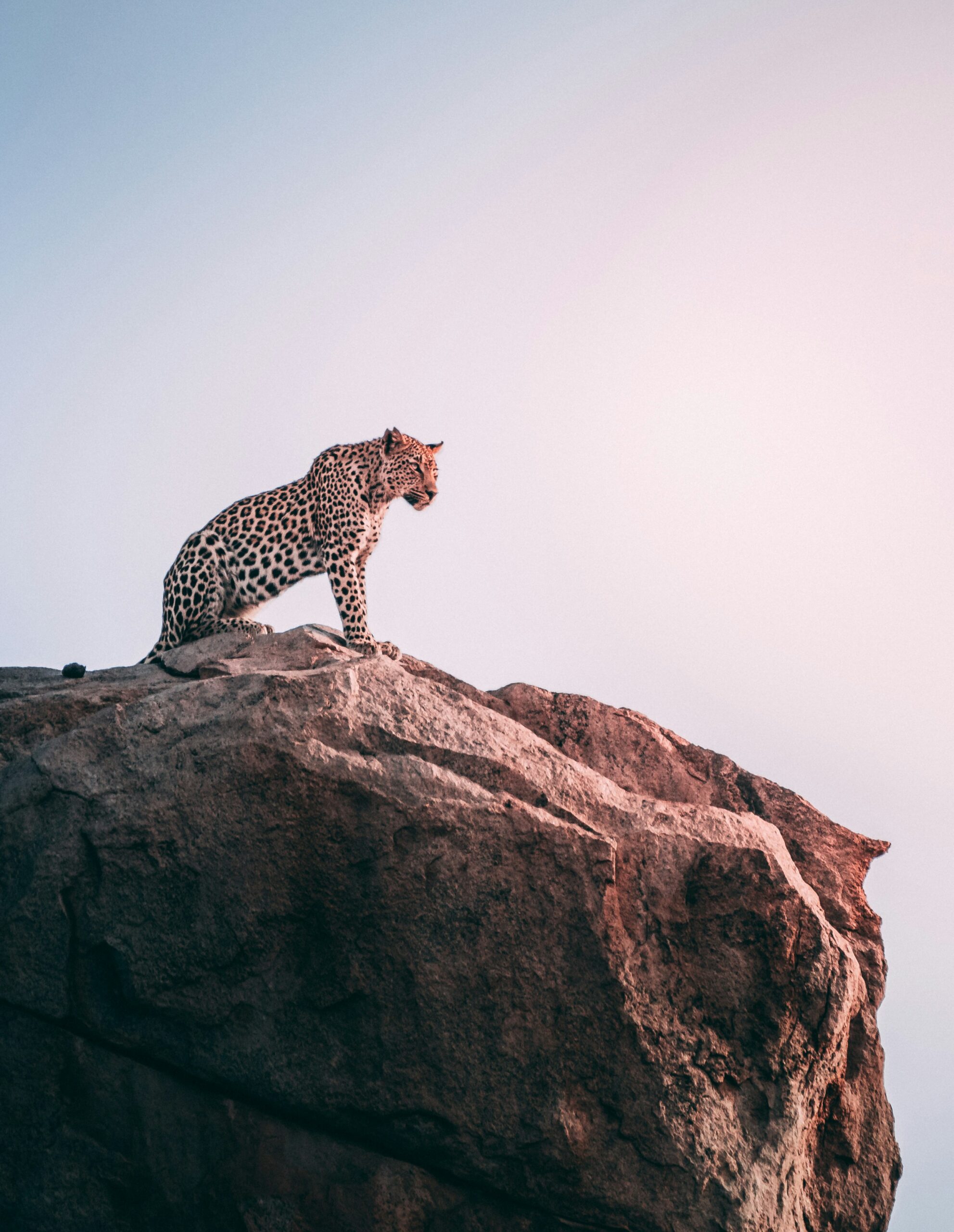If you're an outdoor enthusiast hoping to catch a glimpse of the diverse wildlife residing on Mount Shasta, you may be wondering if there are any guided tours available. With its breathtaking landscapes and rich in biodiversity, Mount Shasta offers a sanctuary for various species. Luckily, you'll be pleased to know that there are indeed guided wildlife spotting tours available on this magnificent mountain. Designed to help you navigate the terrain and provide expert knowledge about the local flora and fauna, these tours are perfect for nature lovers of all ages. So, get ready to embark on an unforgettable adventure, as you immerse yourself in the natural wonders that await you on Mount Shasta!
Overview of Mount Shasta
Location and geographical features
Mount Shasta is a magnificent peak located in Northern California, in the southern end of the Cascade Range. It rises impressively to an elevation of 14,179 feet (4,322 meters) and is the second highest peak in the Cascades. Situated in the Shasta-Trinity National Forest, this iconic mountain draws adventurers and nature enthusiasts from around the world.
The mountain boasts a striking appearance with its symmetrical cone shape and its snow-capped peak, which remains visible throughout the year. It is surrounded by breathtaking vistas, lush forests, and picturesque landscapes, making Mount Shasta an ideal location for wildlife spotting.
Climatic conditions
Mount Shasta experiences a temperate climate with distinct seasons. Summers are warm and dry, with temperatures typically ranging from 70 to 90 degrees Fahrenheit (21 to 32 degrees Celsius). Winters, on the other hand, tend to be cold and snowy, with temperatures dropping to as low as 0 degrees Fahrenheit (-18 degrees Celsius).
The mountain's elevation contributes to its unique microclimate, resulting in cooler temperatures at higher altitudes. This variation in climate creates diverse ecosystems, providing a habitat for a wide range of wildlife species.
Fauna and flora found on Mount Shasta
Mount Shasta is a treasure trove of diverse flora and fauna. Its various ecosystems support a rich array of plant and animal life. The lower slopes are covered in coniferous forests, including species such as Douglas fir, ponderosa pine, and white fir. As you ascend in elevation, the forests give way to alpine meadows and eventually to snow-covered slopes.
The mountain is home to several wildlife species, including black bears, gray wolves, deer, cougars, and elusive mountain lions. Avian enthusiasts will delight in spotting birds such as bald eagles, peregrine falcons, and great grey owls. The varied habitats also support an abundant assortment of smaller mammals, reptiles, and amphibians.
Guided Wildlife Spotting Tours on Mount Shasta
Existence of wildlife spotting tours
If you're eager to explore the wildlife wonders of Mount Shasta, you'll be pleased to know that there are guided wildlife spotting tours available. These tours offer a unique way to experience the mountain's natural beauty while increasing your chances of spotting elusive and rare wildlife species.
Qualified and knowledgeable tour guides lead these expeditions, providing valuable insights into the local fauna and flora. They possess a deep understanding of the mountain's ecosystems and can take you to the best locations for wildlife sightings.
Important points to note
Before embarking on a wildlife spotting tour, there are a few important points to keep in mind. First, it's essential to research and choose a reputable tour operator with experienced guides who prioritize ethical wildlife viewing practices. This ensures that the welfare of the animals and their habitats is respected during the tours.
Additionally, it's crucial to be aware of the inherent unpredictability of wildlife sightings. While guides strive to maximize the chances of spotting animals, they cannot guarantee sightings. Patience, flexibility, and a sense of adventure are key qualities for participants of these tours.

Different Types of Wildlife Spotting Tours
Day tours
Day tours are a popular option for those seeking a wildlife spotting adventure on Mount Shasta. These tours typically last several hours and are designed to provide participants with an immersive experience in the natural habitats surrounding the mountain.
Day tours allow visitors to explore various ecosystems, from lush forests to alpine meadows, in search of wildlife. With the guidance of expert naturalists, participants can observe and learn about the behavior, habitats, and unique characteristics of the animals encountered.
Night tours
For a truly extraordinary wildlife spotting experience, night tours are available on Mount Shasta. These tours offer the opportunity to witness the nocturnal creatures that emerge under the cover of darkness. With specialized equipment and knowledge, guides can lead participants on an unforgettable journey through the mysterious realm of night-active wildlife.
Night tours often focus on animals such as owls, bats, foxes, and other creatures that thrive in the darkness. The tours are conducted in a manner that minimizes disturbance to the animals and their habitats, ensuring a respectful and ethical encounter.
Special tours focusing on specific wildlife groups
For wildlife enthusiasts interested in a more specialized experience, there are tours that focus on specific wildlife groups. These tours cater to those with a particular interest, such as birdwatching, bear tracking, or even learning about the unique plant species found on Mount Shasta.
Specialized tours provide in-depth knowledge and dedicated exploration of specific habitats, maximizing the chances of encountering the desired wildlife. These tours are led by expert guides who possess a deep passion and understanding of the chosen wildlife group.
Popular Tour Operators
Operational tour guides
Several tour operators offer guided wildlife spotting tours on Mount Shasta. These operators have experienced and knowledgeable guides who are passionate about sharing their expertise and love for the natural environment. With their guidance, visitors can experience the wonders of the mountain's wildlife in a safe and educational manner.
Services offered
Tour operators typically provide a range of services to ensure a memorable and enjoyable wildlife spotting experience. These services may include transportation to and from the mountain, guided hikes or drives to prime wildlife viewing locations, and educational presentations about the local flora and fauna.
Operators may also offer equipment rentals, such as binoculars or spotting scopes, to enhance the wildlife spotting experience. Some tour packages may include meals or refreshments, allowing participants to focus fully on the wildlife and the beauty of Mount Shasta.
Popularly reviewed operators
When selecting a tour operator, it's helpful to consider the experiences of others. Popularly reviewed tour operators on Mount Shasta include those commended for their knowledgeable guides, exceptional customer service, and commitment to responsible wildlife viewing practices.
Reading reviews and testimonials can provide valuable insights into the quality of the tours offered, helping you choose a reputable operator that aligns with your preferences and values.

What to Expect on a Tour
Duration of tours
The duration of wildlife spotting tours on Mount Shasta can vary depending on the type of tour and the specific itinerary. Day tours typically last between 2 to 6 hours, allowing participants ample time to explore diverse habitats and encounter wildlife.
Night tours often begin after sunset and may last for a similar duration, providing the opportunity to witness the activity of nocturnal creatures in their natural environment.
Specialized tours focusing on specific wildlife groups may have different durations, ranging from a few hours to a full day, depending on the level of exploration and depth of knowledge shared.
Wildlife likely to be spotted
While wildlife sightings cannot be guaranteed, there are several species that are commonly observed on Mount Shasta. Black bears, with their iconic presence, often make appearances, especially during the warmer months. Deer and smaller mammals, such as squirrels and chipmunks, are also frequently spotted.
Birdwatchers can anticipate encounters with various species, including bald eagles, golden eagles, and migratory birds that use Mount Shasta as a stopover on their journeys. The mountain's unique habitats support diverse avian populations, making it a haven for bird enthusiasts.
Activities involved in the tours
Wildlife spotting tours on Mount Shasta often involve a combination of hiking or driving to different locations, depending on the terrain and accessibility of the wildlife habitats. Participants may also have the opportunity to engage in activities like wildlife photography, wildlife tracking, and learning about the local ecology.
The activities may vary depending on the specific tour and the interests of the participants. Guides strive to provide engaging and educational experiences, allowing participants to connect with the natural world and deepen their appreciation for wildlife and conservation.
Cost and Booking of Tours
Average price range
The cost of wildlife spotting tours on Mount Shasta can vary depending on factors such as the duration of the tour, the services offered, and the reputation of the tour operator. On average, day tours range from $50 to $150 per person, while night tours may be slightly higher in price due to the specialized nature of the experience.
Specialized tours focusing on specific wildlife groups may have varying price ranges depending on the level of expertise and exclusivity provided. It's essential to research and compare different tour operators to find a suitable option within your budget.
Booking procedures
Booking procedures for wildlife spotting tours typically involve contacting the tour operator directly through their website or by phone. Many operators offer online booking systems for convenience. It's important to book in advance, especially during peak seasons, as tours may have limited availability.
During the booking process, operators may require information regarding the number of participants, preferred tour dates, and any specific requests or requirements. It's advisable to communicate any special needs or concerns to ensure a comfortable and enjoyable experience.
Refund policies
Tour operators usually have refund policies in place to account for unforeseen circumstances or changes in the itinerary. The specific policies may vary among operators, so it's important to review the terms and conditions before making a booking.
Refunds may be offered in cases where tours are canceled due to inclement weather or other uncontrollable factors. It's advisable to inquire about the refund policy during the booking process to understand the terms and conditions fully.

Preparation for the Wildlife Spotting Tours
What to pack
When preparing for wildlife spotting tours on Mount Shasta, it's important to pack accordingly to ensure both comfort and practicality. Essentials include sturdy and comfortable footwear suitable for hiking, layered clothing to accommodate changing weather conditions, and sunscreen to protect against the mountain's high-altitude sun exposure.
It's also recommended to bring a backpack with essentials such as water, snacks, insect repellent, and a first aid kit. Binoculars or a camera can enhance the wildlife spotting experience, allowing for better observation and documentation.
Physical fitness requirements
While wildlife spotting tours can be tailored to different fitness levels, some level of physical fitness is generally required. Participants should be able to walk on varied terrain, including potential uneven surfaces and moderate inclines.
It's important to assess personal fitness levels and communicate any concerns or limitations with the tour operator beforehand. This information can help guides make appropriate accommodations and ensure a safe and enjoyable experience for everyone.
Safety guidelines
Safety is of utmost importance during wildlife spotting tours on Mount Shasta. Tour operators prioritize the well-being of participants and adhere to safety guidelines to minimize risks.
It's essential to listen to the instructions and guidance of the tour guides, who are trained to navigate the mountain's terrain and recognize potential hazards. Following their advice and staying within designated areas promotes both personal safety and conservation efforts.
Challenges of Wildlife Spotting on Mount Shasta
Wildlife spotting etiquette
When engaging in wildlife spotting on Mount Shasta, it's crucial to prioritize wildlife well-being and practice respectful behavior. Observing animals from a safe distance and refraining from approaching or feeding them is essential to avoid causing stress or changing their natural behavior.
Maintaining a quiet and calm demeanor, minimizing noise and sudden movements, helps to preserve the tranquility of the environment and increase the chances of wildlife sightings. Respecting their habitat and leaving no trace are vital in preserving the natural beauty of Mount Shasta for future generations.
Possible risks
As with any outdoor activity, wildlife spotting tours on Mount Shasta inherently involve certain risks. Participants should be aware of potential risks such as encountering wild animals in their natural habitats, adverse weather conditions, or natural hazards like steep slopes or slippery surfaces.
However, these risks can be mitigated through proper safety protocols, experienced guides, and adhering to guidelines provided by the tour operators. By respecting wildlife and the environment, participants can minimize potential risks and have a safe and enjoyable experience.
How to mitigate such risks
To mitigate risks during wildlife spotting tours, it's crucial to choose reputable tour operators with experienced guides who prioritize safety and have extensive knowledge of the mountain and its wildlife. Following the instructions and guidelines provided by the guides ensures a safe and respectful experience.
It's also important to be prepared for changing weather conditions by wearing appropriate clothing and carrying essential supplies such as water, snacks, and protective gear. Staying alert and aware of one's surroundings, as well as practicing wildlife spotting etiquette, can further mitigate potential risks and enhance the overall experience.
Importance of Guided Tours
Reasons for opting for guided tours
Opting for guided tours on Mount Shasta is highly beneficial for several reasons. First and foremost, guides possess extensive knowledge about the local flora and fauna, providing valuable insights and educational opportunities throughout the tour. Their expertise enhances the overall experience and deepens the understanding of the natural world.
Guided tours also increase the chances of wildlife sightings. Guides are familiar with the best locations and timing for spotting various species, maximizing the opportunities for participants to observe and learn about the wildlife on Mount Shasta.
Advantages of guided tours
Guided tours offer numerous advantages over self-guided exploration. Guides provide a safety net, ensuring that participants navigate the mountain's terrain safely and avoid potential risks. They possess an intimate understanding of the ecosystems, helping participants develop a deeper appreciation for the intricate connections between wildlife, plants, and their habitats.
Moreover, guided tours foster a sense of community and foster connections with fellow participants who share a passion for wildlife and the environment. The opportunity to exchange knowledge, stories, and experiences adds an enriching social dimension to the tours.
Role of Guided Tours in Wildlife Conservation
Educational roles
Guided wildlife spotting tours have a significant educational role in promoting wildlife conservation. Guides act as ambassadors for the local ecosystems, sharing their knowledge and raising awareness about the importance of biodiversity and habitat preservation.
Through guided tours, participants gain a deeper understanding of the delicate balance of nature and the ways in which humans can contribute to conservation efforts. Learning about the behaviors, threats, and conservation challenges faced by wildlife encourages a sense of responsibility and stewardship towards the environment.
How tours contribute to wildlife conservation
Guided tours play a vital role in funding conservation initiatives and supporting local economies. By participating in these tours, individuals contribute directly to the preservation of wildlife and their habitats. The revenue generated from tour fees often goes towards conservation projects, research, and educational programs that aim to protect Mount Shasta's unique ecosystems.
Additionally, guided tours foster a sense of connection and empathy towards the natural world. Participants develop a personal connection with the wildlife they encounter, inspiring them to champion conservation efforts in their daily lives and advocate for the preservation of natural spaces.
In conclusion, guided wildlife spotting tours on Mount Shasta provide an exceptional opportunity to explore the awe-inspiring beauty and diverse ecosystems of this majestic mountain. These immersive experiences not only offer unforgettable encounters with wildlife but also contribute to wildlife conservation efforts. By choosing reputable tour operators and practicing respectful behavior, participants can embark on a journey of discovery, education, and appreciation for the natural wonders of Mount Shasta.
